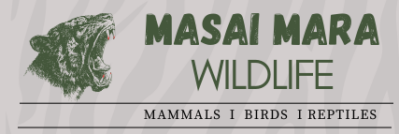- Common Name: Zorilla, also known as the Striped Polecat
- Scientific Name: Ictonyx striatus
- Swahili Name: Kicheche
- Maasai Name: Olpelis (meaning “stinky one”)
- Size:
- Head-Body Length (HBT): 60 cm (24 inches)
- Gestation: 5 weeks
- Recognition: The Zorilla is easily recognized by its shiny black coat adorned with four distinct white stripes that run from the head down to its bushy tail, which is usually the same length as its body. This small carnivore closely resembles a skunk, both in appearance and in its infamous defense mechanism.
Habits and Behavior
- Strictly Nocturnal and Solitary: Zorillas are primarily active at night, foraging under the cover of darkness. During the day, they prefer to sleep underground, often under the roots of established bushes or in burrows. Despite their small size, they are fearless and will not hesitate to use their most effective weapon—their foul-smelling spray—to ward off predators or even larger carnivores.
- Skunk-like Defense Mechanism: The Zorilla is renowned for producing an extremely pungent odor from its anal glands, which it sprays at threats. This scent causes an intense burning sensation in the nasal passages of other mammals. Zorillas are so confident in this defense that there is a story of one holding a pride of nine lions at bay by spraying them with its scent at a carcass.
Diet
- Feeds on: Zorillas are opportunistic feeders, hunting invertebrates such as insects and scorpions, small rodents, and occasionally young birds. Their diet is diverse, allowing them to thrive in various habitats, and they are efficient scavengers, too.
Habitat
- Where to Find: In the Masai Mara, Zorillas are found in savannas and acacia scrublands. They prefer areas with dense vegetation for cover during the day, emerging at night to hunt. Zorillas are often found in the short grasslands around the Serengeti, where Maasai shepherds graze their livestock. These nocturnal creatures are rarely seen in the daytime.
Conservation Status
- IUCN Status: Least Concern. The Zorilla has a wide distribution across sub-Saharan Africa and is currently not under significant threat. However, habitat degradation and human-wildlife conflict in certain regions could pose future challenges. Zorillas are often misunderstood due to their scent defense mechanism, but they play an important role in controlling insect and rodent populations.
Unique Traits
- Incredible Odor Defense: The Zorilla’s most famous attribute is its powerful spray, which can fend off even large predators like lions. The foul-smelling fluid is so pungent that many animals avoid crossing paths with this small carnivore. It is no wonder that the Maasai gave it the name Olpelis, meaning “stinky one.”
- Resemblance to a Skunk: The Zorilla’s striking appearance and defense mechanism closely resemble those of the skunk, which has earned it the nickname “African Skunk.” Despite these similarities, Zorillas belong to the mongoose family rather than the skunk family.
- Fearlessness: Despite its small size, the Zorilla shows no hesitation in standing its ground, relying on its scent-based defense. This fearlessness, combined with its ability to emit a repellent spray, makes it a tough little predator in its ecosystem.
Interesting Facts
- Lion Deterrent: One of the most remarkable stories involving a Zorilla is how it was able to fend off a pride of nine lions at a carcass, simply by spraying its infamous scent. This ability to hold larger predators at bay gives the Zorilla a distinct advantage in the wild.
- Misunderstood Creature: Although often considered a nuisance by people due to its smell, the Zorilla plays an essential role in controlling insect and rodent populations in its ecosystem. Maasai shepherds report that even their dogs run away from the Zorilla if encountered at night, but few people ever spot this elusive creature during the day.
In conclusion, the Zorilla is a fascinating and elusive carnivore in the Masai Mara, known for its incredible odor-based defense and skunk-like appearance. Although rarely seen, its impact on the ecosystem is significant as both a predator and scavenger. Its ability to fend off even the most fearsome predators makes it one of Africa’s most intriguing nocturnal animals.
